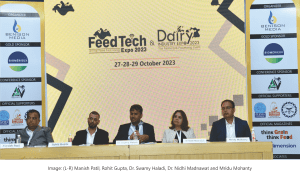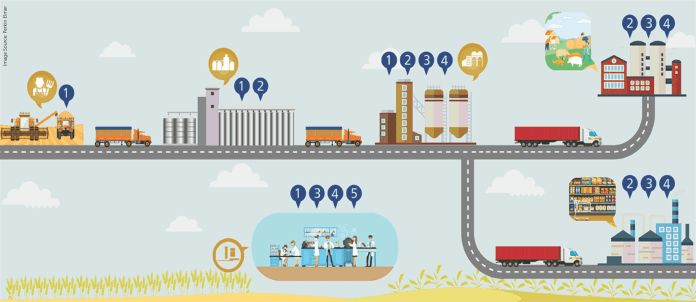Dr. Swamy Haladi from Trouw Nutrition moderated the session on Holistic Approach to Mycotoxin Risk Management: from A to Z during the recently concluded Feed Tech Expo in Pune. The session was opened with an emphasis on the need for a holistic approach for an effective mycotoxin risk management in the animal industry. He shared “The 10-point System” for effective mycotoxin risk management and it must start from optimal crop production, harvesting, storage of raw materials, feed production, feed storage, and finally managing mycotoxin toxicity within the animals. He updated the audience on the recent learnings from the “World Mycotoxin Forum”, especially the impact of climate change on the future mycotoxin profile.
Dr. Nidhi Madnawat from Cargill India gave an overview of the important mycotoxins of concern in India, their interactive negative effects on animals, and their management to minimize the risk to health, performance, and farm economics. She emphasized the fact that 85% of mycotoxins are produced in the field over which feed producers have less control. We need to adapt new technologies at the feed mills, including effective mycotoxin binders, for mycotoxin reduction. Grain byproducts are at higher risk for mycotoxin contribution and hence should be used carefully.


Mridu Mohanty from Buhler India emphasized the importance of various grain treatments for effective mycotoxin risk management. He remarked that only two mycotoxin-contaminated grains in 10,000 healthy grains can make a lot unfit for the purpose. Grain sieving, dust and husk aspiration, gravity separation, and optical sorting (for moldy grains) can help to reduce mycotoxin load significantly.
Manish Patil from Japfa India emphasized the need for optimal feed mill hygiene in reducing mycotoxin load in the complete feed. Mold growth should be controlled at the levels of raw material receiving system, warehouse management system, production processes, feed mill hygiene system, and feed quality control system. Laboratories used for various analyses should be accredited and new technologies should be evaluated regularly.
Overall, an excellent event as evidenced by the number of discussions that took place during the Q and A session. One of the key questions discussed was the potential spraying of non-mycotoxigenic fungi in the field to reduce aflatoxin content in corn. Another point of discussion was the need for increased participation of Indian Scientists, University Professors, and Industry professionals at Global Mycotoxin Events.













